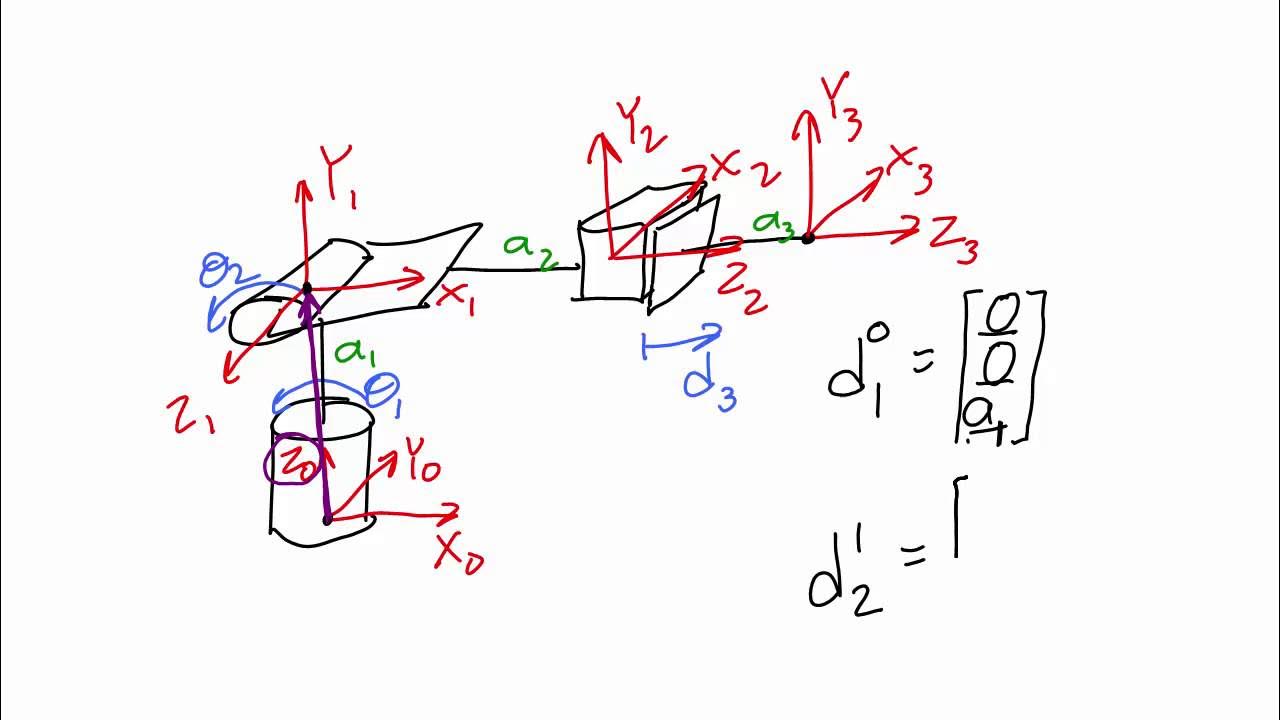Vektor Posisi (Vektor Bagian 2) Matematika Peminatan Kelas 10 - m4thlab
Summary
TLDRThis video lesson teaches the concept of position vectors and how to calculate vectors between two points. It covers key topics such as defining position vectors, determining the position of points relative to the origin, and using vector subtraction to find the difference between two points. The video demonstrates how to calculate position vectors using coordinate values, with practical examples and step-by-step explanations to help viewers understand how to work with vectors algebraically, without needing to draw diagrams. It's a clear guide to mastering basic vector operations in a 2D coordinate system.
Takeaways
- 😀 Position vectors represent the location of a point relative to the origin (0,0).
- 😀 To find a position vector, simply use the coordinates of the point, e.g., for point A(4,7), the position vector is (4,7).
- 😀 Vectors are defined by the direction and distance from the origin or another point.
- 😀 The vector from the origin to a point is referred to as the position vector of that point.
- 😀 Vectors can be represented using their coordinates in vector form, e.g., → OA = (4,7).
- 😀 To find the vector between two points A(x1, y1) and B(x2, y2), subtract the position vector of point A from the position vector of point B: → AB = → OB - → OA.
- 😀 A negative sign in coordinates indicates a direction opposite to the positive axis (left or down).
- 😀 Vectors are often written in lowercase (e.g., → a for vector A), while the points themselves are written in uppercase (A).
- 😀 Vector subtraction can be done component-wise: subtract the x-coordinates and y-coordinates separately.
- 😀 In some cases, when finding a vector, you subtract the position vectors and use the result to determine the relationship between the two points.
- 😀 When given a vector and a point, you can find the coordinates of the other point by adding or subtracting the vector from the known point.
Q & A
What is a position vector?
-A position vector is a vector that represents the position of a point relative to the origin (0,0) of a coordinate system. It is drawn from the origin to the given point in the coordinate plane.
How do you determine the position vector of a point?
-To determine the position vector of a point, simply use the coordinates of the point. For example, if a point has coordinates (4,7), the position vector would be represented as (4,7).
What does a position vector signify in terms of coordinates?
-A position vector signifies the displacement from the origin to the point represented by the coordinates. It shows the direction and distance from the origin to the specific point in the coordinate plane.
What is the difference between a vector and a position vector?
-A position vector specifically refers to the vector from the origin to a point. A general vector, on the other hand, can represent the displacement between any two points, not necessarily starting from the origin.
How do you calculate the vector between two points?
-To calculate the vector between two points, subtract the coordinates of the starting point from the coordinates of the ending point. For example, for points A(2,3) and B(8,5), the vector AB is calculated as (8-2, 5-3) = (6, 2).
Can vectors have negative coordinates?
-Yes, vectors can have negative coordinates. If the vector is pointing in the negative direction along an axis, the coordinate values will be negative. For example, a point with coordinates (-8,3) would have a negative x-component.
What does it mean if a vector has coordinates (0, 0)?
-A vector with coordinates (0, 0) represents the zero vector, which has no magnitude and no direction. This vector indicates that there is no displacement or movement from the origin.
How do you determine the vector if the coordinates of both the starting and ending points are known?
-If the coordinates of both the starting and ending points are known, subtract the starting point's coordinates from the ending point's coordinates. The resulting vector represents the displacement between the two points.
How is vector addition or subtraction related to the calculation of a vector between two points?
-Vector addition or subtraction helps determine the relationship between two vectors. To find the vector from point A to point B, you subtract the position vector of A from the position vector of B. This can be seen as the addition of the negative of the vector from A to the origin.
What is the significance of a vector’s direction and magnitude in real-life applications?
-In real-life applications, a vector’s direction and magnitude are crucial for understanding displacement, forces, velocities, and other physical quantities. For instance, vectors are used in physics to represent velocity, acceleration, and force, which all have both direction and magnitude.
Outlines

This section is available to paid users only. Please upgrade to access this part.
Upgrade NowMindmap

This section is available to paid users only. Please upgrade to access this part.
Upgrade NowKeywords

This section is available to paid users only. Please upgrade to access this part.
Upgrade NowHighlights

This section is available to paid users only. Please upgrade to access this part.
Upgrade NowTranscripts

This section is available to paid users only. Please upgrade to access this part.
Upgrade NowBrowse More Related Video

VECTORES DE POSICION. TEORÍA Y CONCEPTOS DE ESTÁTICA 👨🏫

Panjang Vektor | Modulus Vektor dan Vektor Satuan (Vektor Bagian 6) Matematika Peminatan Kelas X

Grade 11 Sc | Ch 7: Kinematics | 7.3. Position Vector (1)

Vektor di Bidang Datar Part 1 (Konsep dan Ruang Lingkup) - Matematika Kelas 12

Aula de Vetores Parte III - G.A. e A.L.

1 1 4 Lecture Video 1 of 2 Displacement Vectors
5.0 / 5 (0 votes)